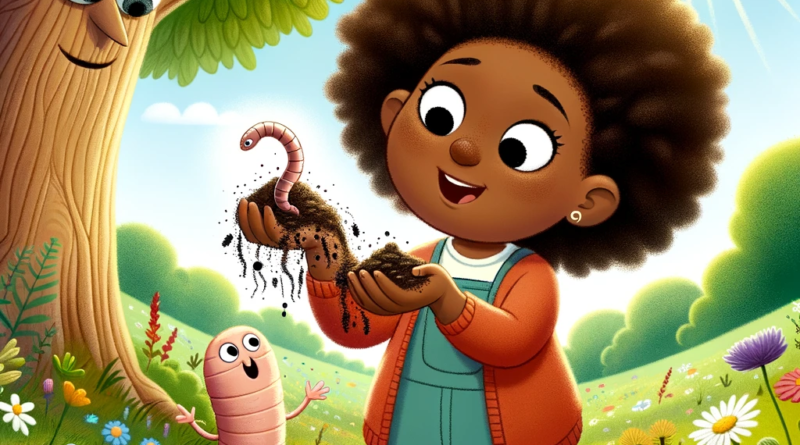Wanja’s Discovery: A lesson in Soil Microbiology
The sun shone brilliantly over the countryside, illuminating the vibrant colours of the wildflowers that dotted the landscape. Wanja, a curious young girl who loved exploring, was wandering through the fields when she stumbled upon a fascinating sight. A group of tiny organisms were moving around in the soil, barely visible to the naked eye.

Intrigued, Wanja decided to investigate further. She knelt down and gently scooped up a handful of dirt, examining it closely. As she marvelled at the intricate network of tiny creatures working together to create a healthy ecosystem, her mother approached her.

“Who are you talking to, Wanja?” her mother asked.
Wanja looked up at her mother and replied, “I’m talking to the soil microbes, Mom. They’re too small to see, but they’re really important.”
Her mother looked at her curiously, unable to see the tiny organisms that Wanja was talking about. Wanja continued her exploration, meeting a friendly earthworm named Wally, who explained the crucial role of soil microbes in creating healthy soil.

“We soil organisms are like the little doctors of the earth,” Wally said. “We help to break down organic matter and turn it into nutrients that plants can use to grow.”
Wanja was fascinated by what Wally had told her and continued to observe the hidden world of soil microbes. She saw tiny fungi weaving through the soil, creating a vast network of connections, and bacteria breaking down organic matter. As she watched the soil come alive, she realized that these tiny organisms were the key to a healthy planet.
Further, along her journey, Wanja met Oakley, a wise old tree that had been alive for over a hundred years. Oakley explained to Wanja how soil microbes were essential to the health of the entire forest.

“We trees rely on the soil microbes to keep the soil healthy and full of nutrients,” Oakley said. “Without them, we would not be able to grow and thrive.”
Wanja was amazed by the interconnectedness of everything in nature and felt a newfound appreciation for the hidden world of soil microbes. As she looked out over the rolling hills, she wondered just how many other secrets the earth held, waiting to be discovered.

In conclusion, the story highlights the important role that soil microbes play in creating a healthy ecosystem. Soil microbes, such as fungi and bacteria, help to break down organic matter and turn it into nutrients that plants can use to grow. Without soil microbes, plants and trees would not be able to thrive, which would have a significant impact on the entire ecosystem.
Glossary:
- Bacteria: Microscopic organisms that play a key role in the decomposition of organic matter and nutrient cycling in the soil.
- Compost: Decomposed organic matter that is used as a natural fertilizer in gardening and agriculture.
- Ecosystem: A community of living organisms in conjunction with the nonliving components of their environment, interacting as a system.
- Fungi: A group of soil microbes that includes yeasts and molds. Fungi help decompose organic material and form symbiotic relationships with plants.
- Microbes: Tiny living organisms that can only be seen with a microscope, including bacteria, fungi, and protozoa.
- Organic Matter: Plant and animal materials that are or were living and are now in or on the soil.
- Photosynthesis: The process by which green plants and some other organisms use sunlight to synthesize foods from carbon dioxide and water.
- Soil Aeration: The process of introducing air into the soil, which is crucial for soil health and plant growth.
- Symbiosis: Interaction between two different organisms living in close physical association, typically to the advantage of both.
- Nutrients: Substances that provide nourishment essential for growth and the maintenance of life.
Discussion Questions:
- Why are soil microbes such as bacteria and fungi important for the health of plants and trees like Oakley?
- What did Wally the Earthworm mean by saying soil organisms are like “little doctors of the earth”?
- How do Wanja’s interactions with Wally and Oakley help her understand the ecosystem better?
- Why is it important for us to understand and appreciate these tiny organisms that we cannot see with our naked eye?
- Can you think of ways we can help protect and nurture the soil microbes in our environment?




